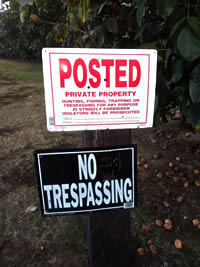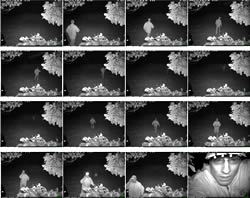Surveillance for Parks and Recreation Areas: Trail Cameras

Learn about the correct choices of covert video gear which are designed specifically to meet the field surveillance needs of law enforcement who are tasked with monitoring and securing parks and rec areas. Part 1 of 3 of a 3 part series.
Check out the links below to learn more about leveraging portable covert video surveillance.
- Introduction
- Part One: Trail Cameras
- Part Two: Video Based Devices
- Part Three: Cellular Based Devices
Covert Technology
For technology, there are several great choices of covert video gear designed specifically to meet the field surveillance needs of law enforcement. All of these can be placed into three main categories, trail cameras, video based devices and cellular based devices.
Trail Cameras
I use the term 'trail cameras' loosely because most devices tagged with name are designed for hunting and not law enforcement. Whether designed for hunting or law enforcement, the basic operation of a trail camera is the same:
- The camera remains on standby drawing very little power
- Motion is detected with the built-in PIR (Passive Infrared Sensor)
- Full camera operation resumes
- The unit emits a flash of infrared light to illuminate the subject
- The camera takes a digital image
- The unit then resumes the standby mode after a predetermined amount of time
Trail cameras designed for hunting work very well for hunting purposes but not as well for law enforcement purposes. Here’s where hunting trail cameras fall short:
- Infrared Illumination – typically emits between 840 nm to 880 nm which creates several red dots making the camera very visible to the criminal. Law enforcement or security versions tend to operate at 940nm or higher, which is far beyond the frequency response of the human eye, making it totally invisible even in complete darkness.
- Capture Speed – is usually slow with hunting trail cameras as it is not critical to the operation of the camera. Law enforcement versions however are very fast and some can even capture a license plate at 50mph or greater.
- Standby Time – is normally low with hunting versions which is problematic given that many criminal activities such as marijuana production unfold over months. LE and security trail cameras from companies such as Reconyx, have a standby time up to 1 year or 44,000 images, whichever comes first.
A fellow law enforcement professional, that I will leave unnamed, prefers to use law enforcement trail cameras because of the relative low cost and ease of deployment. On a recent deployment, he sought to capture the identification of individuals operating OHVs (Off Highway Vehicles) in a wildlife refuge.
He placed the Reconyx camera in a fire-break where the OHVs frequented, and although the trespassers never returned he was successful in catching criminal activity. As luck would have it, a marijuana grower decided to plant a crop within one foot of the Reconyx camera.
Allowing the marijuana production to unfold, he gathered countless photos which were useful in identification and proof of the activity. Needless to say, a full confession was easily obtained.

The same law enforcement officer using the Reconyx brand cameras is quick to recommend them but is equally quick to provide caution in their deployment. He has seen many simple, but costly mistakes.
- Don't Guess – Before deploying trail cameras never guess as to what field of view it will capture. If the trail camera has a video output, use a small field monitor to determine the field of view. If a video out is not available, at least perform a few test shots and take a laptop with you to review the results.
- Use a camouflaged stake – To make deployment rapid, attach the camera to a wooden stake and camouflage it. This can save several minutes on installation which can be critical to avoid detection when implementing the camera in the field.
- Keep placement low – A common practice is to place cameras up high to minimize detection and increase security. However, high placement usually results in excellent pictures of what happened and very poor pictures of who did it. Keeping the camera down low at upper torso level will help you see what happened, identify who did it and increase the PIR detection range.
- Keep it secure – Having the camera lower may increase the risk of detection, but there are easy ways to keep it secure with either or both, security hardware and concealments.
Hardware security
For hardware security, a good trail camera will have optional accessories. Prime examples of the effectiveness of the security hardware, are the results obtained from a La Crosse County Sheriff’s Office deployment. Local intelligence revealed that marijuana production was taking place and in response they placed a trail camera in the vicinity.

Fortunately the intelligence proved correct, but unfortunately the target identified the camera and attempted to remove and destroy it. However, the attempts by the bad guy to remove the camera were futile. La Crosse Sheriff’s Office circulated the acquired mug shot through local media and made an arrest one week later.
Security by concealment
The concealment of trail cameras relative to other surveillance cameras is somewhat challenging given that nearly the entire face of the unit must be exposed to give clearance for the PIR motion detector, camera and infrared array. However, some clever folks have devised concealments, such as a fence post or warning sign, that are commercially available.
These concealments do an excellent job of masking the camera and, in a sense, are positioned in such an obvious manner that they don’t set off mental triggers to help someone recognize it as a camera. The results are impressive.



